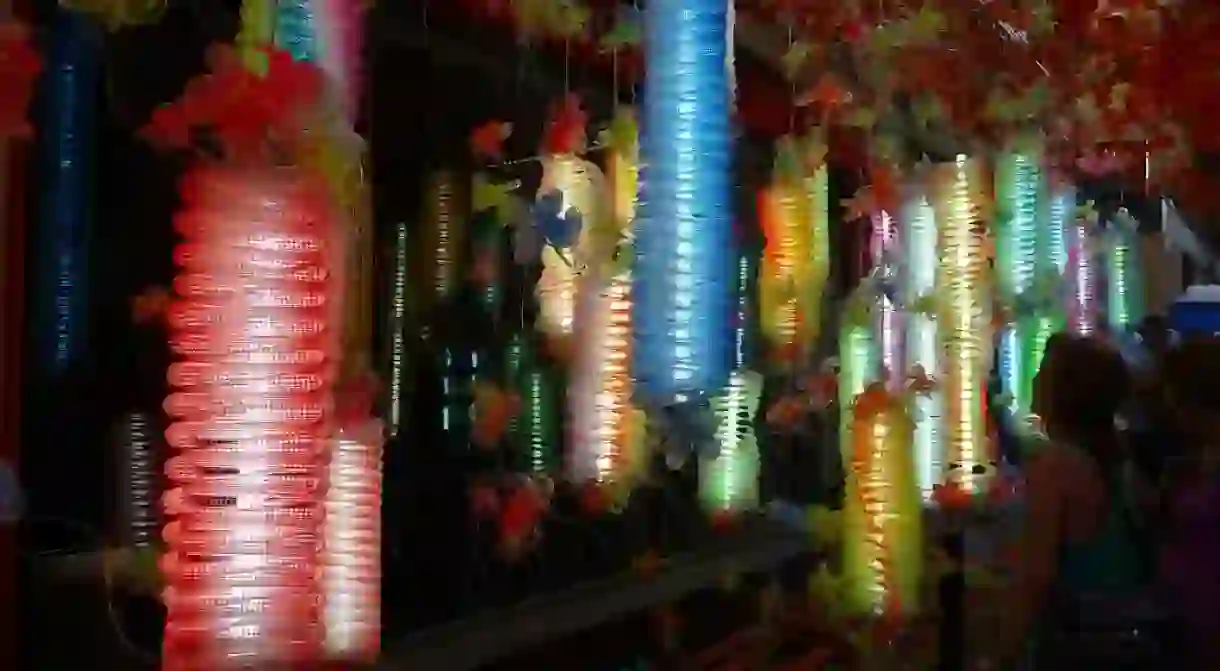10 Things to Know Before Visiting the Festa Major de Gràcia, Barcelona

The Festa Major de Gràcia is one of Barcelona’s most anticipated summer festivals, filled with colour, music and artistic creativity. If you find yourself in the city anywhere from August 15–21, then why not take the opportunity to see what it’s all about? Here are 10 things to know before visiting.
It’s one of the city’s best summer festivals
The Festa Major de Gràcia is one of the best and most colourful summer festivals in Barcelona. Each district has its own major festival sometime throughout the year (with many held in summer), but Gràcia’s is by far one of the best, attracting international visitors as well as locals.
It’s mostly about street decorations and music
One of the main parts of the festival are the decorated streets. Residents of the area spend months preparing elaborate decorations, made out of recycled materials such as plastic bottles and cardboard boxes. Each street chooses a theme for the year, such as zombies, jungle, Alice in Wonderland or music, and decorates their street accordingly. Prizes are awarded for the best ones.

It’s a great chance to learn about Catalan culture
As well as having its own unique features, the festival also incorporates classic elements of Catalan culture, including parades of the gegants (local giants) and caps grossos (big heads), as well as castellers (human towers) and correfocs (fire runs, where people dressed as devils spray fire throughout the streets).
The festival is over 200 years old
The festival’s origins can be traced back to over 200 years ago. In fact, in 2017, the district celebrated its 200th anniversary with a host of special events.

It’s held in one of Barcelona’s best districts
Gràcia has become one of Barcelona’s trendiest and most charming barrios, filled with hip bars, quirky boutiques and excellent international restaurants. It’s a favourite with both locals and visitors alike.
Gràcia used to be a separate village
Gràcia, like a few of Barcelona’s outer lying districts, used to be a separate village and officially joined the city in 1897. You can still see vestiges of its past due to its village-like feel, its own town hall and big clock tower.

It lasts for one week
The festival lasts for a whole week, between August 15 and 21, so there are plenty of chances to enjoy it, more than once if you feel like it. Some days you might wish to see the daytime events, while on another you might visit at night enjoying the funfair and visiting the decorated streets.
Choose your timings carefully
The decorated streets are arguably best visited at night, when the sun has gone down all the lights come on. The first day of the festival is of course very crowded, as are the weekends, so try and time your visit to the second or third night of the festival, if they fall on a weekday. Towards the end of the week, some of the decorations begin to fall apart and are starting to look a little sad so you might want to avoid these too.

There are over 500 activities during the festival
The event incorporates over 500 activities throughout the week, which range from traditional to quirky and diverse. Look on the official website or grab a programme to find out exactly when each event takes place and where. There are events on during the day, as well as at night. Around 300 of the activities are for families and children, and take place during the day. There’s everything from workshops and kids’ puppet theatre to giant water fights.

Respect the neighbours
The majority of the festival takes place down small narrow streets or in plazas, surrounded by apartment buildings. This means that events are happening right outside people’s front doors and windows. Respect the neighbours while you enjoy the festival by keeping their streets clean and keeping noise to a minimum after 1am.













